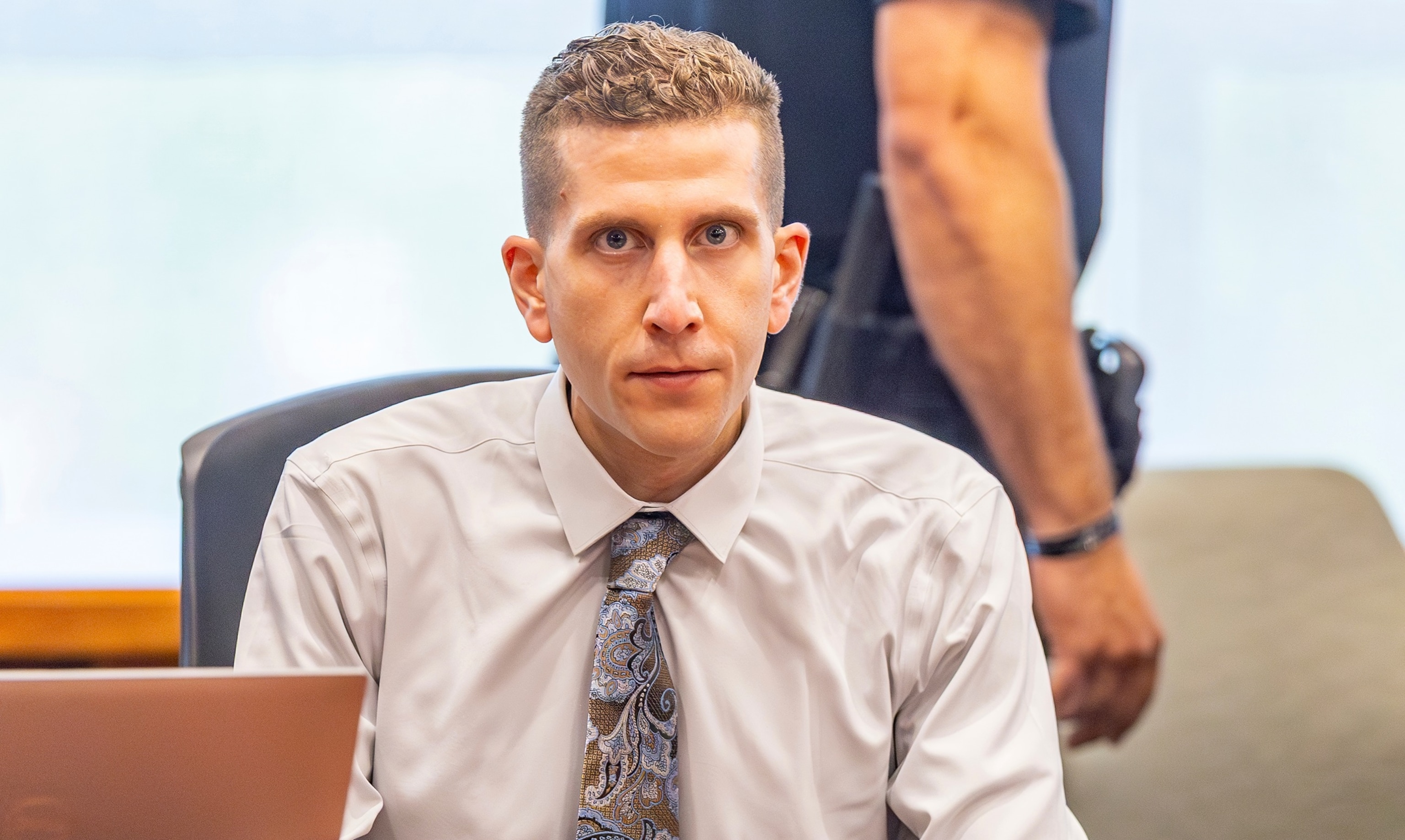This story may contain accounts and descriptions of actual or alleged events that some readers may find disturbing.
For the first time, the public can read what many have wondered for nearly three years: just how gruesome the scenes were where Kaylee Goncalves, Madison Mogen, Ethan Chapin and Xana Kernodle were brutally murdered in the early morning hours of Nov. 13, 2022.
Hours after Bryan Kohberger was sentenced on Wednesday to four life sentences plus 10 years for the killings, the Moscow Police Department released around 300 documents about the investigation.

Brian Kohberger appears at the Ada County Courthouse, July 2, 2025, in Boise, Idaho.
The kitchen door was ajar when officers arrived, and blood was smeared on the walls and floors, coating the four college students’ belongings and pooling by their bodies, according to police reports released by police.
Some of the victims were bathed in so much blood, officers responding to the King Road home at first were not able to sort out what additional injuries there might be. Their faces were so badly damaged as to be unrecognizable, according to the police report.
Kernodle had “defensive knife wounds” on her hands, the police report said. “It was obvious an intense struggle had occurred.”
On the third floor, Kaylee and Madison lay together in a bed covered in a pink blanket that was “covered in blood.” There was a “large pool of blood” near Kaylee’s midsection, and blood spatters on the walls.

Four University of Idaho students were killed at an off-campus house on King Road in Moscow, Idaho, in November 2022.
Idaho Statesman/TNS via Getty Images, FILE
“Madison appeared to be laying up against Kaylee. Madison had what appeared to be wounds to her forearm and hands. Madison had a gash under her right eye which appeared to go from the corner of her eye to her nose. Kaylee was unrecognizable as her facial structure was extremely damaged,” a report said.
The bodies were pale and rigid and appeared to have lost a lot of blood, another police report said.
According to the coroner’s report, Ethan Chapin’s “fatal injury was from a stab wound under his left clavicle which severed his subclavian vein and subclavian artery, and also his jugular vein was severed.”
Kernodle’s fatal injuries were stab wounds to her lung and heart. She had over 50 stab wounds, “mostly defensive,” according to a report.
Both Mogen and Goncalves were stabbed in the lung and liver. Goncalves also had two brain bleeds and a stab behind her clavicle, which cut the vein and artery. She had over 20 stab wounds as well as injuries “connected with asphyxiation and blunt force trauma.”
The coroner determined that the murder weapon “was not serrated, single edged, very sharp, and said a lot of force was used by the suspect.”
She would later also determine that the “shape and the size” of the KA-BAR knife Kohberger purchased on Amazon was “consistent as being the weapon which could have caused the injuries on all four of the victims.”
When investigators discovered that the tan leather sheath of a KA-BAR knife had been left behind at the crime scene, they canvassed the Moscow area to see where, if anywhere, the killer might have locally bought the knife. They visited numerous sporting goods and hardware stores to no avail, according to a police report.

In this Nov. 30, 2022, file photo, a flyer seeking information about the killings of four University of Idaho students who were found dead is displayed on a table, along with buttons and bracelets, during a vigil in memory of the victims in Moscow, Idaho.
Then at Walmart, while perusing knives on display, the investigator learned something else important: the Walmart employee helping him said that “about two to three weeks ago, a white college aged male, asked for a black ski-mask that would cover his face.” She “was unable to provide much detail other than he was taller than she was and maybe had tan skin complexion,” and that she told him they only had camo ski masks available. He then “walked away.”
Surviving roommate Dylan Mortensen would later tell police on the night of the killings, she saw a male intruder clad all in black with a black balaclava ski mask on obscuring most of his face — but that she did think she saw his bushy brow.
After the killings, investigators also spoke with Kohberger’s fellow students at Washington State University, where he had been pursuing his Ph.D. in criminology. A fellow teaching assistant said he “considered Kohberger a friend,” and that he was “very intelligent but also selfish,” and that Kohberger “would often mislead him when it came to their shared work and would have [him] complete work meant for Kohberger.” Kohberger was also “frequently twenty minutes late to their classes.”
The two also discussed “Kohberger wanting a girlfriend on many occasions,” the fellow TA said. Kohberger also “liked to discuss his area of study which was criminal decision making and burglary type crimes,” according to a report.
And the student also told investigators “about some injuries he witnessed on Kohberger’s face and hands,” and while he was “unsure of the date,” he thought he had noticed the injuries “on two separate occasions in October and November of 2022.” One was a “large scratch on Kohberger’s face which [the student] described as looking like the scratches from fingernails.” The student “also saw wounds to Kohberger’s knuckles on two separate occasions,” and when he asked Kohberger what happened, he “replied he had been in a car accident.”



